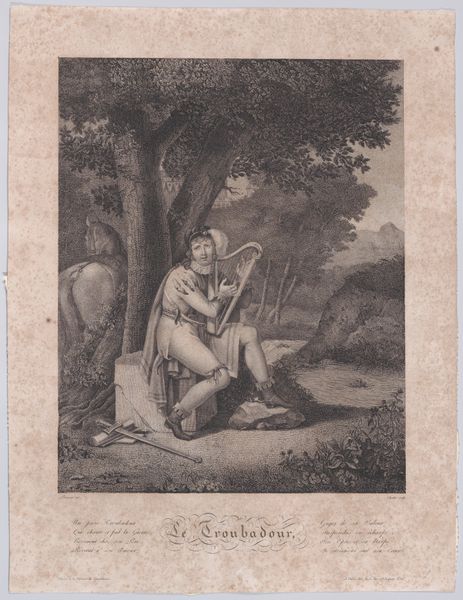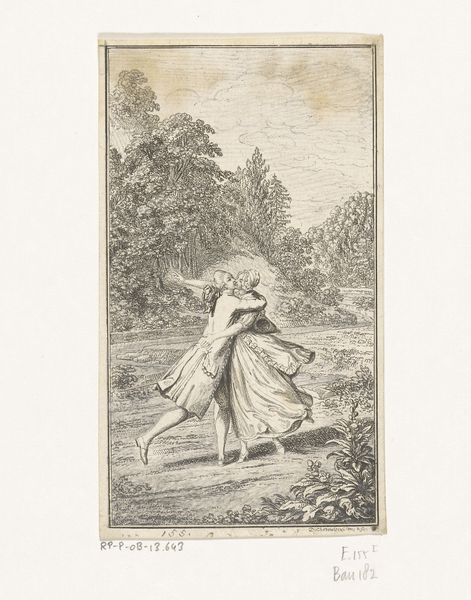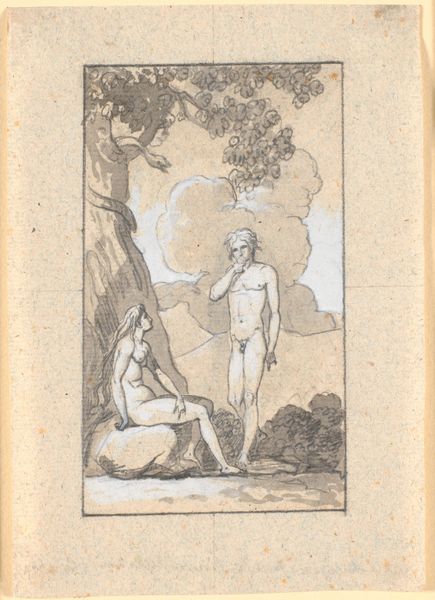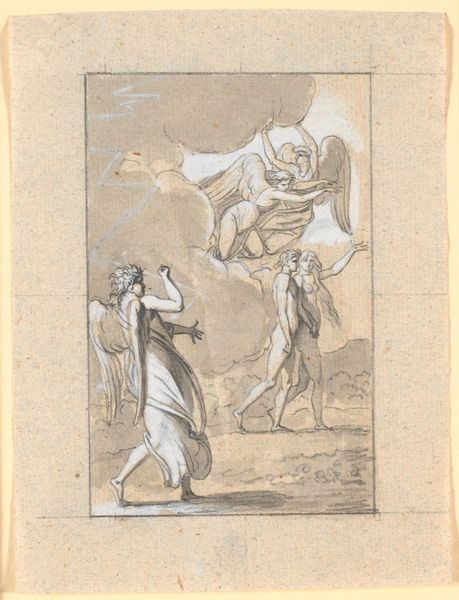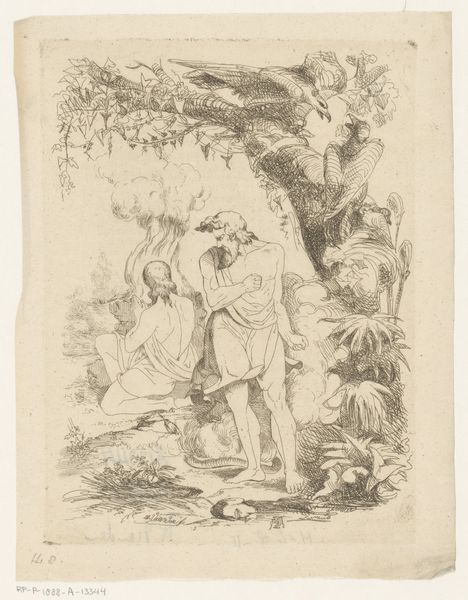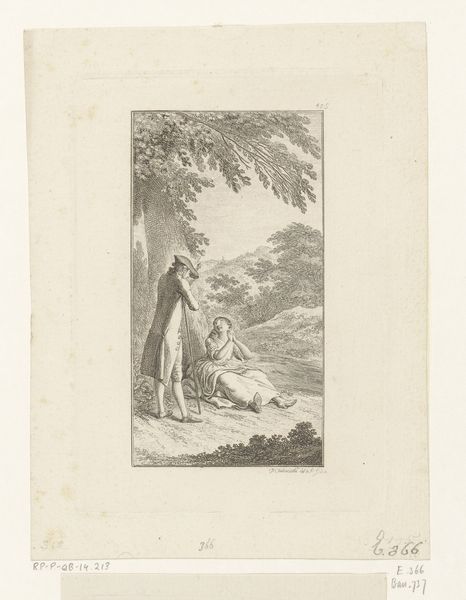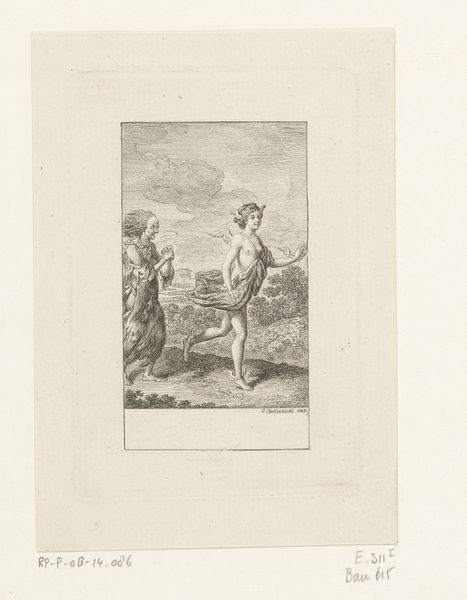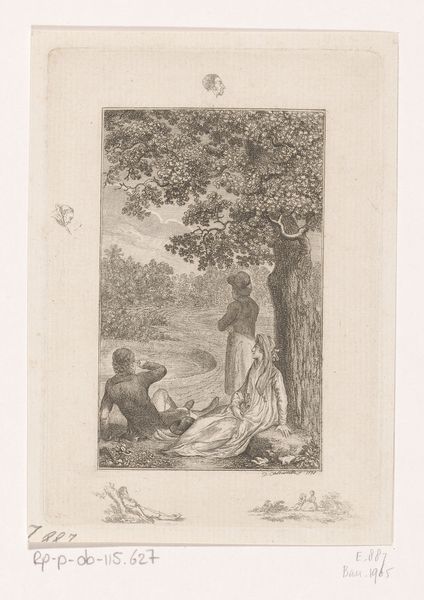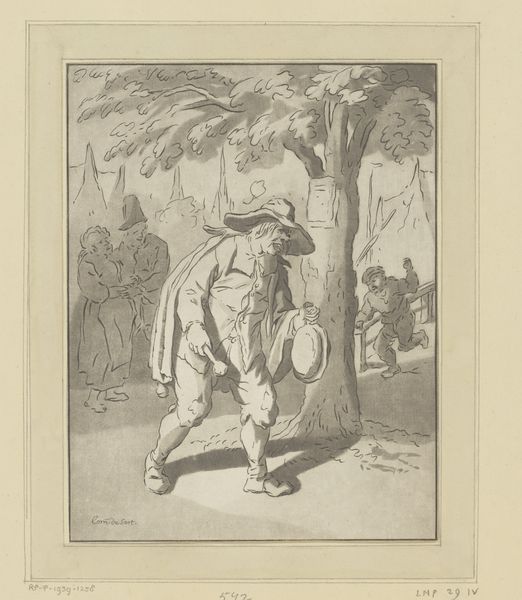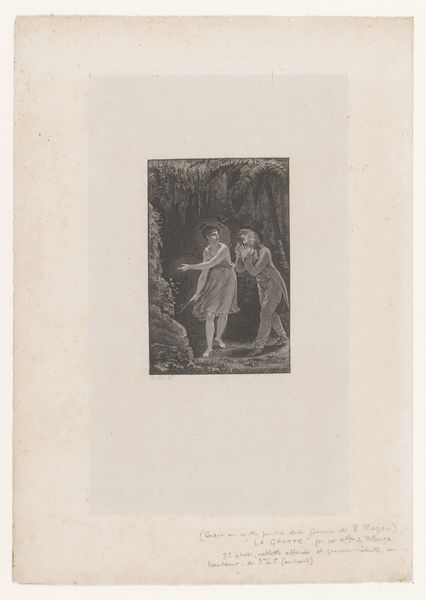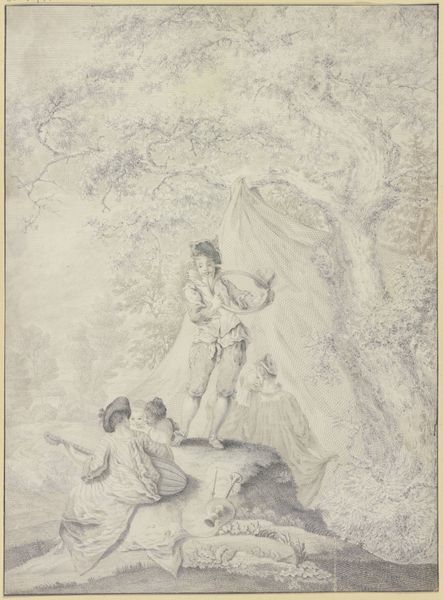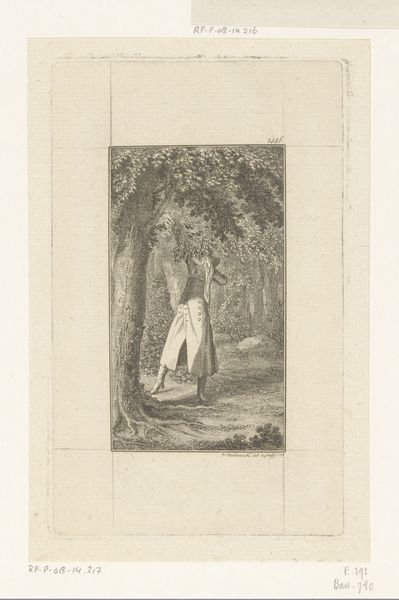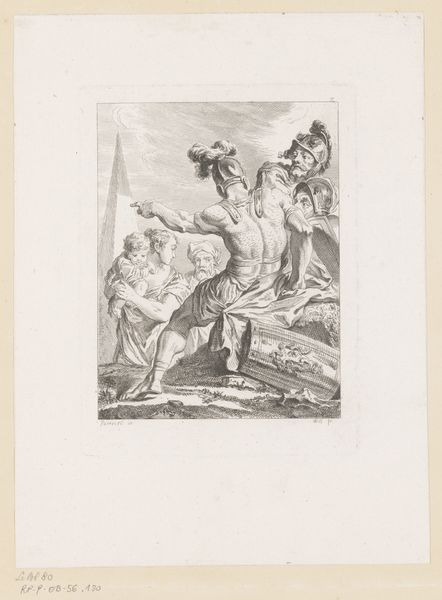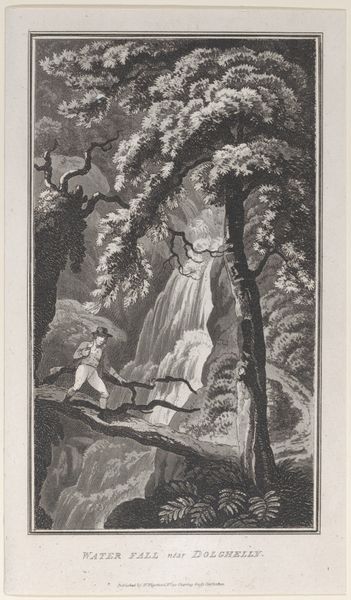
Dimensions: 130 mm (height) x 76 mm (width) (bladmaal)
Art Historian: Editor: We are looking at Nicolai Abildgaard's "Eva plukker af Kundskabens Træ" or "Eva Picking from the Tree of Knowledge," created between 1777 and 1780. It looks to be rendered in watercolor, pencil and colored pencil, so the color palette feels rather muted. Adam's reaching gesture makes him look, well, not so heroic. How would you interpret this depiction? Art Historian: What strikes me immediately is the choice to represent such a pivotal moment—the Fall—in a somewhat understated manner, stylistically situated within Romanticism. It isn't grand history painting. Abildgaard lived in an era grappling with shifting social and political landscapes. Considering that, how do you read the nudity here and its implications for power dynamics? Editor: Hmmm. I guess I always considered that being nude here, this work references innocence and vulnerability, before the dawn of self-awareness. But given that, it seems Abildgaard doesn't empower them much. Art Historian: Precisely. Think about it in terms of knowledge and disobedience. Eve is often vilified as the instigator, but Abildgaard depicts her actively reaching for knowledge while Adam looks almost fearful. He has made her the agent of change while seemingly diminished. Editor: I see your point. That contrasts starkly with many depictions I've encountered. I had never thought to read her body language that way. It makes you wonder about gendered perspectives of agency then and how they may influence artmaking. Art Historian: Exactly! Consider that Abildgaard was working in a time when traditional roles were being challenged. His choices likely reflect those intellectual debates of agency and perhaps a critique of established norms surrounding female passivity. This drawing isn’t just about a biblical story, but about the politics of knowledge and power. Editor: This has made me look at it in a completely different light! Now it prompts a re-evaluation about power relationships and active decisions and their impacts as he conveys them. Art Historian: Wonderful! That's precisely the purpose. Works such as this one allows us to question, to examine how artists engage with socio-political dialogues through visual language, and question these narratives over time.
Comments
No comments
Be the first to comment and join the conversation on the ultimate creative platform.
